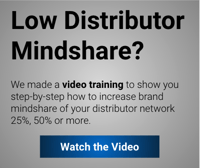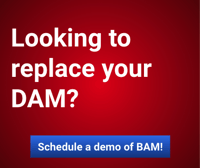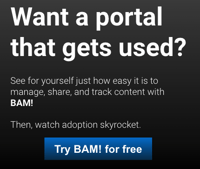“The future is already here — it’s just not very evenly distributed.”
-William Gibson
One of the biggest challenges of my career has been in helping companies adapt to technology while preserving the human contact and personal relationships upon which they built their business. It’s the message of thousands of books on sales and marketing, and it’s a lesson that needs to be learned over and over again because it’s become so easy for people to buy things without talking to another human being.
Today, everybody has a mobile device of some sort, and can buy almost anything from the comfort of their couch. I can order food, entertainment, furniture, home improvement supplies, obscure parts for my obscure car, and literally millions of other items shipped directly to my house with free 2-day delivery. I can use Google to search for what I want, and through the magic of algorithms and logistics I’m just a couple of clicks and a credit card away from my new stuff. And through it all, I never have to talk with another human being.
This level of convenience has been building for decades, if not centuries. Mass production, standardization, and consumer trends made direct and impersonal selling more common and effective, and it has been refined to the point where I usually forget I even ordered detergent until a box arrives on my front porch. It’s the logical outcome of mass consumer culture mixing with technology, and plenty of people can tell you more than you care to know about it.
But what about the big stuff, the things that are too big and custom to order with a single click? I’m here to share how we can level the sales technology playing field… to more evenly distribute the future, so to speak. If you’re in the market for an industrial injection-molding machine, or maybe the saws that turn trees into planks for wood floors, or even the trucks that transport the finished product to your customers, you’re facing a level of complexity that doesn’t work with online stores or catalogs.
These things are big, and really complex. They often need to be configured specifically for the site where they will be installed. In many cases, they’re built for a very specific purpose and may be the only one of their kind in existence. These things are sold through trusted human relationships, where there’s no place for technology to speed up the sales process… or so it seems.
Companies that manufacture industrial equipment understand the complexity of their products, and rely on trained sales teams to match customers with the right products. This relationship-based approach is a good thing, and is how industrial equipment manufacturers will be selling for many years to come. Trained salespeople must truly understand what they’re selling, and build trusted relationships with their customers to help them find the best solution to their specific problems. They depend on trust and communication between the customer and sales reps to achieve successful sales.
But times are still changing. Customers are more likely to look at a company’s website and read online reviews during their early decision-making. They want easy access to information relevant to their needs. They email questions in the middle of the night. And above all, they’re a lot less patient because they’re used to buying things with a click or two. And of course, the reps need sales training.
So how do we bridge the gap? How can we deliver the information customers want, on their terms? How do we empower sales professionals with current and relevant product information? How do we keep them informed of changes to pricing or product specs?
This is the power of sales enablement programs. Sales enablement is how you coordinate your company’s product, marketing, distribution, and sales teams, and begin communicating as one company. It adds the ability for your team to turn to a single source of truth about your products — videos, calculators, product configurators, and other compelling content — at any time. It helps you in creating content, helps you increase sales, even helps with sales management. Many a sales force, once they see their sales productivity skyrocket with a well executed sales enablement strategy, naturally see their company’s sales rise proportionally.
With a sales enablement solution, your product and marketing teams are able to instantly add and update information to your sales teams, whether their territories cover one town or one hemisphere. Your product and marketing teams can track how your marketing materials used and shared instantly. They’ll know pricing in the field is always up-to-date, and incentives can be communicated in real time to help drive specific goals. This is a major improvement over wasted time and resources, printing and mailing thousands of brochures that are never properly distributed.
For your distribution and sales teams, a sales enablement solution is a briefcase full of the most current information, all stored in an app on a tablet or phone, with attractive graphics, easy access to information, and interactive content to help highlight how your products surpass the competition. They can quickly share information right from the device to the customer, provide technical information, calculate ROI, and even quote pricing for your products and related services. No more uncomfortable conversations like, “this year’s pricing is pretty close to this sheet from last year,” or, “I know the specs changed, so I’ll need to get in touch with the product manager to see if this machine will still fit in your shop.”
Above all, a really good sales enablement solution delivers value. It can help you qualify leads, drive revenue, move your prospects through the buyer’s journey. It should be easy and intuitive to use, and can drastically shorten the sales cycle by improving the quality and timeliness of information provided to the customer. It should provide insight into what campaigns or material are most effective, and allow your marketing and product teams to update and distribute those materials in minutes, rather than days or weeks.
As it happens, my company makes a really good sales enablement solution. It’s called BAM! (complete with the exclamation point), and it was built from over a decade of experience building software to improve sales operations in service of selling heavy equipment. BAM! specifically addresses the needs of companies that make things you can’t buy on Amazon. At Pop Art, we’ve been building solutions like this for some of the biggest manufacturers in the world. If you live in the United States, it’s almost certain you’ve seen a manufacturing, construction, or transportation product that was sold because of our sales enablement software.
At Pop Art, we’ve built a powerful platform from the ground up, using modern technology and business processes, starting with a deep focus on usability and the needs of the people who use it every day. Simply put, our platform aids sales enablement efforts. We understand the importance of building trust with our customers, making sure they get a human to talk to when they have questions or concerns, associating a face with the company, training and coaching sales staff, making sure somebody is there to listen when a customer needs to solve a problem, and closing deals.
BAM! is unlike anything else on the market today, and we’re confident it will improve your sales team’s productivity. It’s flexible and adaptable to your business, requires very little training, and is surprisingly affordable.
Interested? Then let’s get started. Visit the BAM! Mobile Sales Tool Page and sign up for a demo. We’re excited to show you what we’ve done, and we’re pretty sure you’ll be excited, too.


